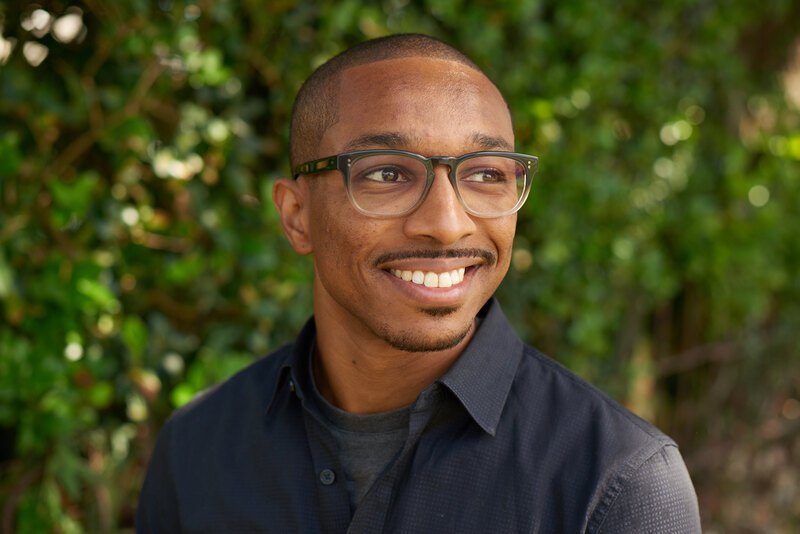Perspectives: Matty Williams

September 18, 2017
Matty Williams is a Landscape Architect in the Detroit studio of Spackman Mossop Michaels. He originally hails from Detroit, Michigan and is a graduate of Lousiana State University.
What drew you to landscape architecture?
Culture and the architectural language of a place are elements I try to engage wherever I go. I consider myself a “city boy,” but I’ve always enjoyed being outdoors. While I lived in New York, I started paying attention to the forms, feelings, and spaces I found in parks and promenades, and how each offered a different feeling as I occupied it. I gravitated toward parks the most. I still get a sense of relief every time I’m in a park.
Around the same time in my life, I found great joy in taking on small gardening projects and reading up on the environmental justice and urban farming movements, which had very strong roots in Detroit, my hometown. Fast forward to now, I am a landscape architect because this discipline feels like the intersection of my interests related to engaging people, strengthening communities, and expressing ideas in really creative ways.
What is driving you professionally right now?
As I’ve had opportunities to work on more projects that turn into built landscapes, I’ve seen the ideas expressed by communities become real spaces. That really inspires me to listen well and respond with relatable designs and concepts.
In my spare time, I really enjoy exploring animation, parametric modeling, and video as methods to display designs and data — I love their ability to make compelling presentations and to communicate a lot of information. Those methods are not practical or straightforward enough, given the scale of many projects. But I think these types of animated data make for excellent aids in community engagement and in describing larger processes that impact a site of any size. So, I get excited thinking about new ways to present information and what new possibilities that might open up for the communities I get to serve and create designs with.
I’m also really excited about drone photography and exploring how it can add to our ability to both view and read data in the natural environment. Drones are awesome for creating aerial shots for diagrams or renderings, and I know that drones have many more advanced capabilities that we have yet to incorporate into our practice. Researching drone capabilities and strategizing ways to include them in our work is really part of the fun of working for a small design firm.
What challenges is landscape architecture allowing you to address right now?
I believe that right now our nation is in the midst of a major awakening. It feels like a tumultuous time, but it’s also filled with lots of opportunities for designers to have a positive impact in the communities and landscapes where we build. For me, designing toward social justice is an important aspect of what I get to do as a landscape architect.
It’s a really fascinating time to be a landscape architect working in New Orleans and Detroit. The City of New Orleans recently took down the statue of Confederate General Robert E. Lee, which stood prominently in the central traffic circle at the intersection of St. Charles and Howard Avenues. This major move sparked a lot of dialogue about what should be done with this site, which was once seen as a symbol of oppression, and how the future site should be something equitable that all people can feel welcome to visit. It is a conversation I’m privileged to contribute ideas to, and while tragic, I’m hoping that recent events in Charlottesville, Virginia and the removal of Confederate statutes in Baltimore, Maryland will also result in productive dialogue about how we can move forward as a nation by making our public spaces truly reflect the better parts of our nation’s rich heritage and diversity.
On another front, landscape architects are being heavily engaged in the transformation of my hometown, Detroit. I’m thrilled to have opportunities to work on projects there, including some that are transforming how the city converts vacant property into park space, providing new streetscape opportunities, and introducing infrastructure for bikes and pedestrians in ways the city has not yet seen. Detroit is a forward-thinking city, working through socioeconomic and infrastructure issues that have impacted residents for decades. But the city’s planners, engineers, designers, and placemakers are helping it evolve into a cutting-edge place to live, work and play. I’m grateful to help work through some of the landscape issues to help get us there.
What challenge would you give emerging leaders?
There are some big ticket issues that emerging leaders should focus on: climate change, water scarcity, the increasing global population, and decreasing arable land. However, I’d also like to challenge emerging leaders to encourage diversity within the profession. Within our lifetimes, we may not fully realize the mitigating impacts of our designs on larger ecological processes. But, it’s quite conceivable that through a conscious effort we can reach a variety of underrepresented individuals and encourage them to explore careers in the design realm. I think the result for future generations could look and feel a lot more like peace.
Where do you think the profession needs to go from here?
It's funny how often I meet people who think that landscape architects simply pull weeds, prep planting beds, and recommend pretty flowers to put in them. I really think this is a huge opportunity for the profession — to make public awareness and education about landscape architecture a focus.
Introducing young students to landscape architecture concepts is an especially important task. I believe that engaging youth in design projects gives them new ways of understanding their environment, helps them become more active members of their communities, and provides them with the agency to speak up on larger societal issues. I’ve had the opportunity to be involved with programs like National Organization of Minority Architects’ Project Pipeline which does exactly that. It encourages equality within the profession and provides an introduction to young students interested in the world of architecture and design. It’s a brilliant platform to reach youth and a model that landscape architects would benefit from.
LAF's Perspectives interview series showcases landscape architects from diverse backgrounds discussing how they came to the profession and where they see it heading. Any opinions expressed in this interview belong solely to the author. Their inclusion in this article does not reflect endorsement by LAF.











